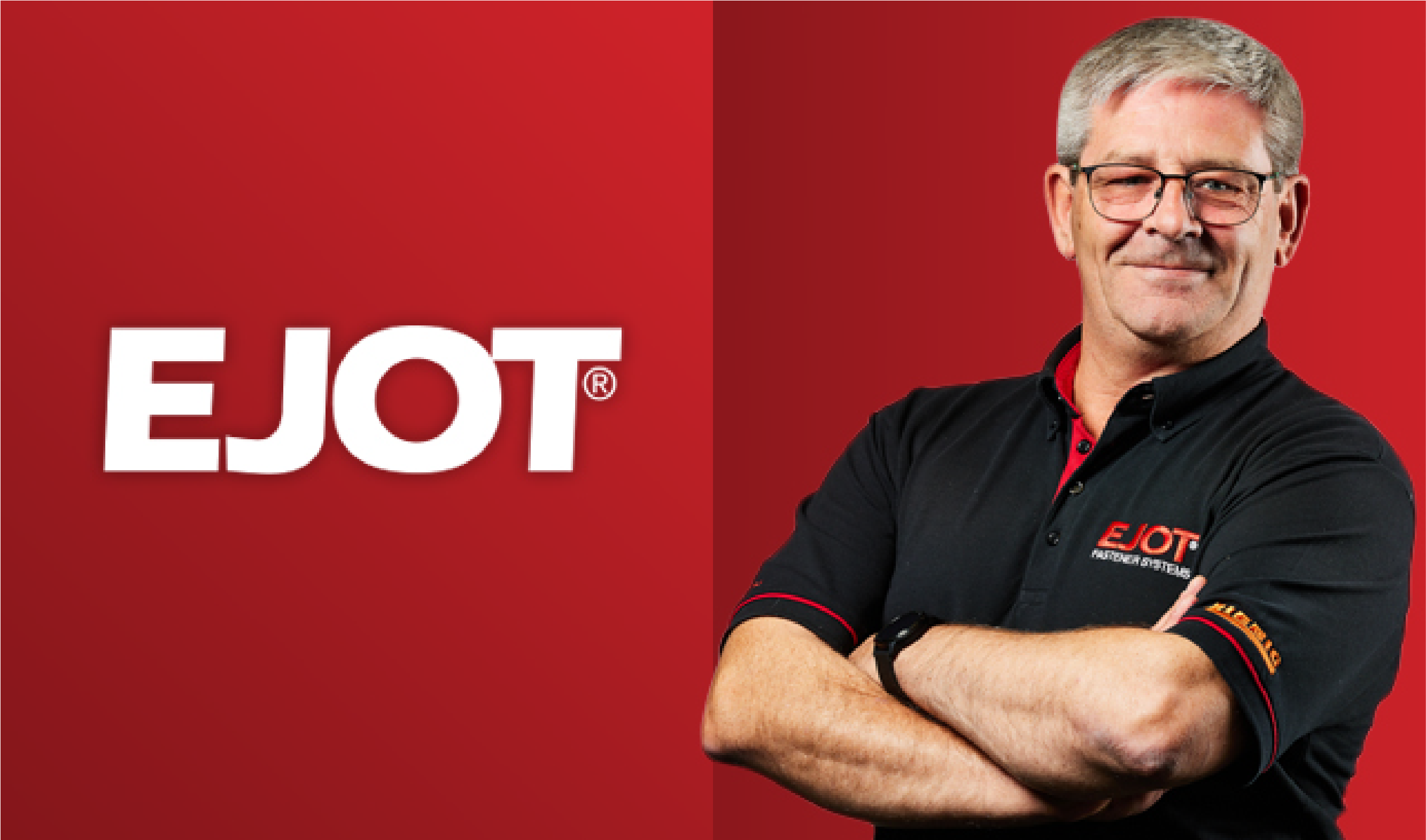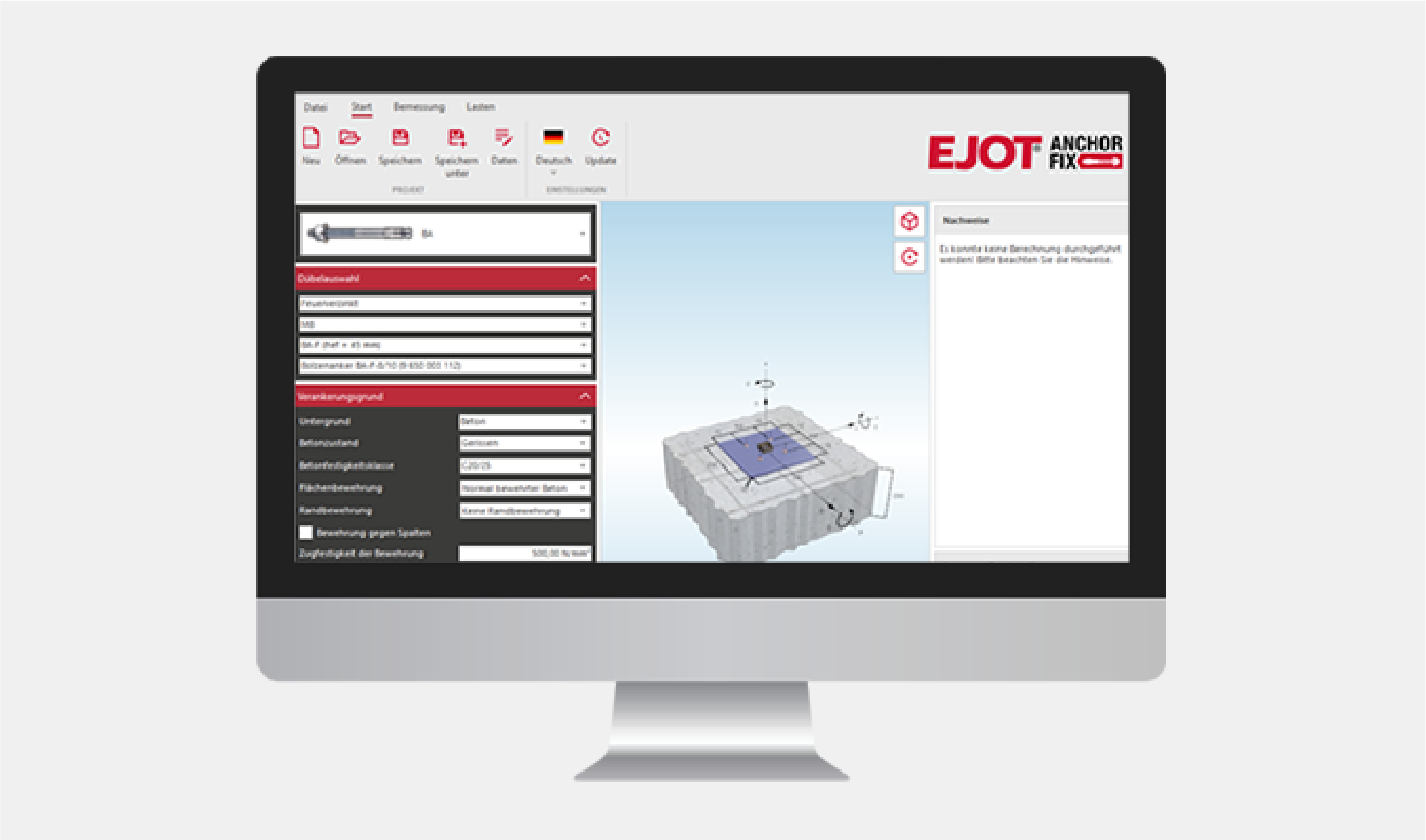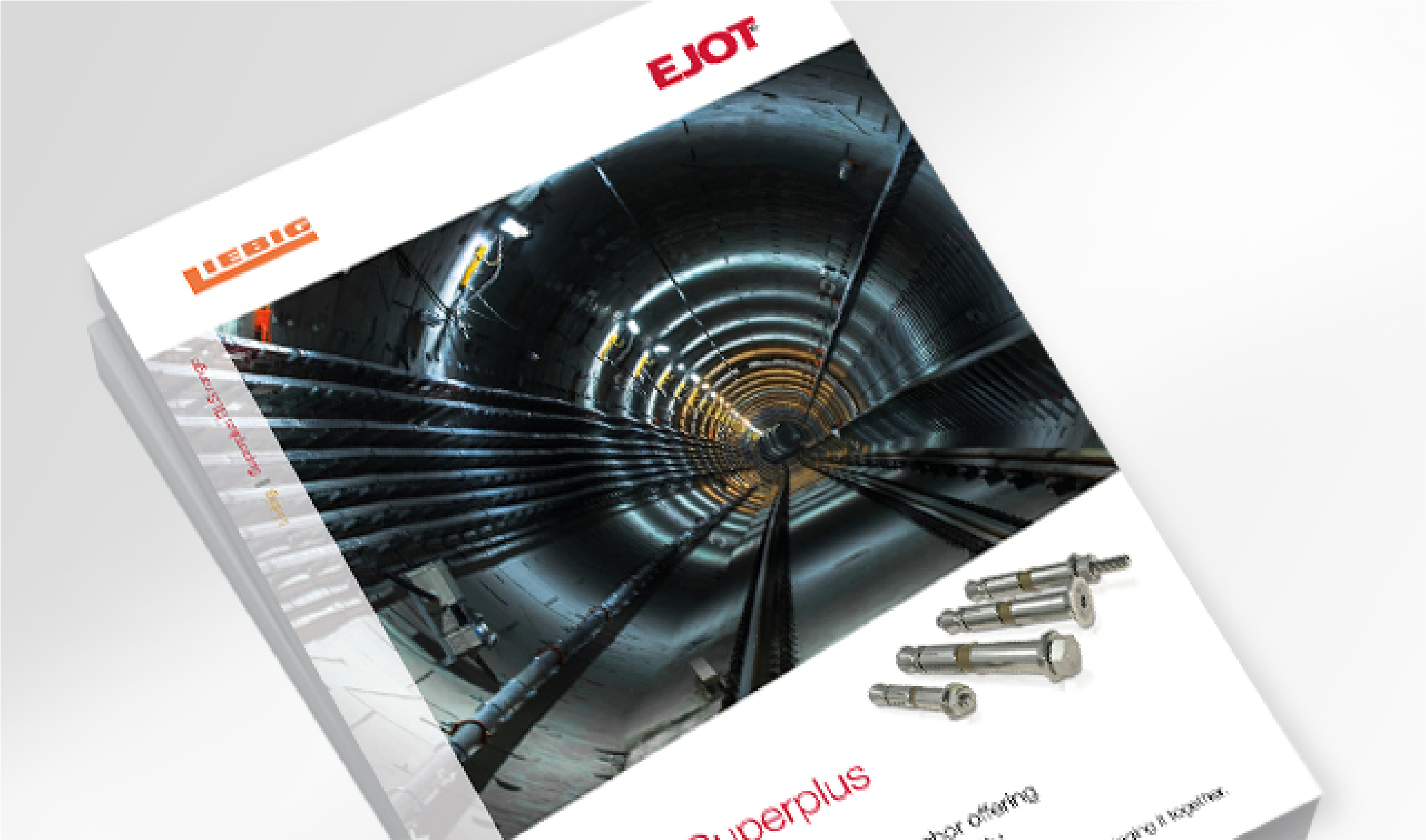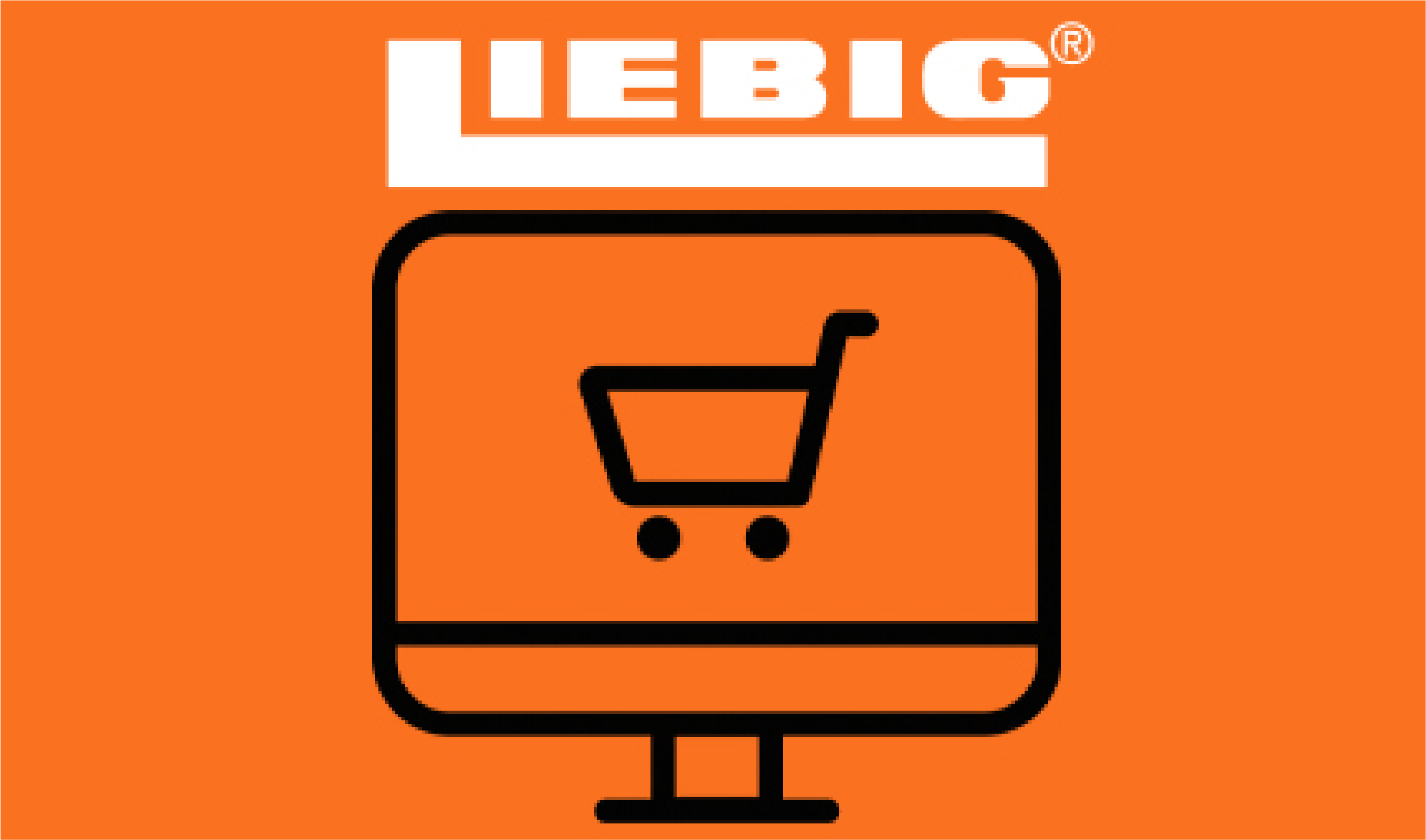Part 3:
Modularity means...
Installation Simplicity
Anchor installation simplified through modular design
Any construction product that is designed to be easy to install has to be welcomed, but the role ‘simple installation’ plays in ensuring the project outcomes match the design intent and specification goals is often undervalued.
Specifying a highly engineered, premium quality component or system where installation is specialist in itself, could result in a solution failing to deliver on its promise. And there could be the need for costly remedial work unless it is fitted by a team with specialist knowledge.
Unique technology means installation simplicity
Design innovation, therefore, is not only about a product’s performance capability – it should also seek ways to make installation as simple as possible to reduce risk. That is the thinking behind the LIEBIG Superplus BLS heavy duty anchor from EJOT.
Superplus BLS is unlike any other type of concrete anchor due to its modular design and self-undercutting cone which means no special tooling is needed to install it. Costly and complex installation processes have effectively been ‘engineered-out’.
Unlike some mechanical anchors which rely on friction to provide a secure hold in concrete, Superplus BLS is designed to create its own undercut into the concrete as torque is applied. This cone shaped element features teeth which cut into the concrete in a single mechanism – no need to use a special tools either during or after drilling the hole as is the case with other undercut anchors.
This self-undercutting mechanism is also not hole depth dependent. In many circumstances it will work just the same in a hole depth far greater than necessary, providing the marking knurls on the anchor are flush or even below the concrete surface. This eliminates the need for another special tool, setting equipment, which again makes life easier for the installer and reduces the reliance on specialist knowledge of how to use it.
By reducing the requirement for specialist tools and installation knowledge, the anchor installation process can be much quicker and lower cost. Take away the need to purchase the additional tools and the time needed to complete the additional processes, and the advantages over other types of anchors are immediate – in addition to an initial lower unit cost per anchor thanks to its modular design, which will deliver more “kN per £”. Want to know more? Read Part 1: Modularity means more kN per £.
Shallow Embedment Depths - a real design advantage
Further important benefits are realised in terms of health and safety. These stem from the fact that Superplus BLS can be used with relatively shallow embedment depths in comparison to other anchors offering a similar diameter. This is due to the effectiveness of the self-undercutting anchor in being able to optimise its use of the concrete capacity by means of the interlock mechanism, rather than through friction, which is created by significant expansion forces.
Firstly, the shallow depths can reduce the risk of hand arm vibration, which the HSE is seeking to address in the construction industry as a priority issue. And because installers do not need to drill quite so deep when using Superplus BLS, they are able to drill more holes in every allotted HSE time frame.
Secondly, drilling less means cutting the amount of dust generated during anchor installations. Like hand arm vibration, the HSE is working with the construction industry to control dust on sites because of the damaging health effects, to the extent that it covers it in the Control of Substances Hazardous to Health (COSHH) Regulations. So, from an installer point of view, using Superplus BLS anchors represents a healthier choice, which will be welcomed by everyone committed to this cause including the Construction Leadership Council.
And installers’ toolkits will be lighter too! All that is required to install this heavy duty anchor is a set of standard SDS drills, a brush, pump, vacuum cleaner and a torque wrench.
Ultimately, making a concrete anchor easier to install is an important innovation that will help the construction industry work smarter with less physical and mental stress. This is an area for improvement that is as important as designing buildings to meet higher standards because it impacts heavily on productivity, finished project quality and cost.
Specifying a highly engineered, premium quality component or system where installation is specialist in itself, could result in a solution failing to deliver on its promise. And there could be the need for costly remedial work unless it is fitted by a team with specialist knowledge.
Unique technology means installation simplicity
Design innovation, therefore, is not only about a product’s performance capability – it should also seek ways to make installation as simple as possible to reduce risk. That is the thinking behind the LIEBIG Superplus BLS heavy duty anchor from EJOT.
Superplus BLS is unlike any other type of concrete anchor due to its modular design and self-undercutting cone which means no special tooling is needed to install it. Costly and complex installation processes have effectively been ‘engineered-out’.
Unlike some mechanical anchors which rely on friction to provide a secure hold in concrete, Superplus BLS is designed to create its own undercut into the concrete as torque is applied. This cone shaped element features teeth which cut into the concrete in a single mechanism – no need to use a special tools either during or after drilling the hole as is the case with other undercut anchors.
This self-undercutting mechanism is also not hole depth dependent. In many circumstances it will work just the same in a hole depth far greater than necessary, providing the marking knurls on the anchor are flush or even below the concrete surface. This eliminates the need for another special tool, setting equipment, which again makes life easier for the installer and reduces the reliance on specialist knowledge of how to use it.
By reducing the requirement for specialist tools and installation knowledge, the anchor installation process can be much quicker and lower cost. Take away the need to purchase the additional tools and the time needed to complete the additional processes, and the advantages over other types of anchors are immediate – in addition to an initial lower unit cost per anchor thanks to its modular design, which will deliver more “kN per £”. Want to know more? Read Part 1: Modularity means more kN per £.
Shallow Embedment Depths - a real design advantage
Further important benefits are realised in terms of health and safety. These stem from the fact that Superplus BLS can be used with relatively shallow embedment depths in comparison to other anchors offering a similar
Firstly, the shallow depths can reduce the risk of hand arm vibration, which the HSE is seeking to address in the construction industry as a priority issue. And because installers do not need to drill quite so deep when using Superplus BLS, they are able to drill more holes in every allotted HSE time frame.
Secondly, drilling less means cutting the amount of dust generated during anchor installations. Like hand arm vibration, the HSE is working with the construction industry to control dust on sites because of the damaging health effects, to the extent that it covers it in the Control of Substances Hazardous to Health (COSHH) Regulations. So, from an installer point of view, using Superplus BLS anchors represents a healthier choice, which will be welcomed by everyone committed to this cause including the Construction Leadership Council.
And installers’ toolkits will be lighter too! All that is required to install this heavy duty anchor is a set of standard SDS drills, a brush, pump, vacuum cleaner and a torque wrench.
Ultimately, making a concrete anchor easier to install is an important innovation that will help the construction industry work smarter with less physical and mental stress. This is an area for improvement that is as important as designing buildings to meet higher standards because it impacts heavily on productivity, finished project quality and cost.









